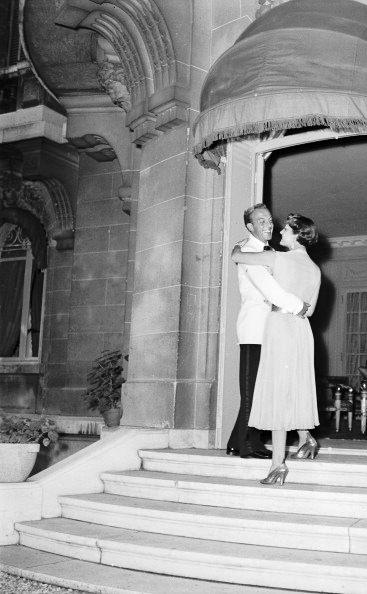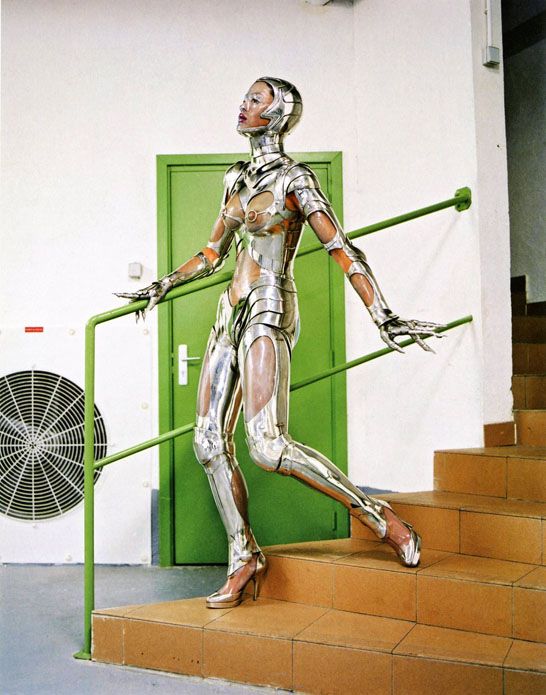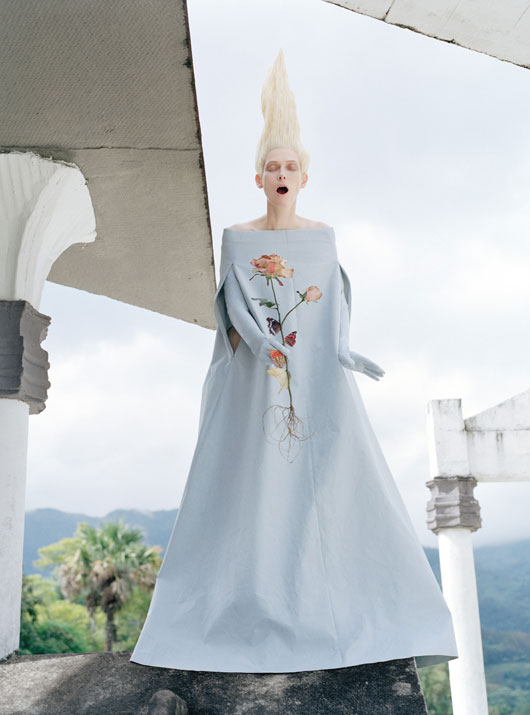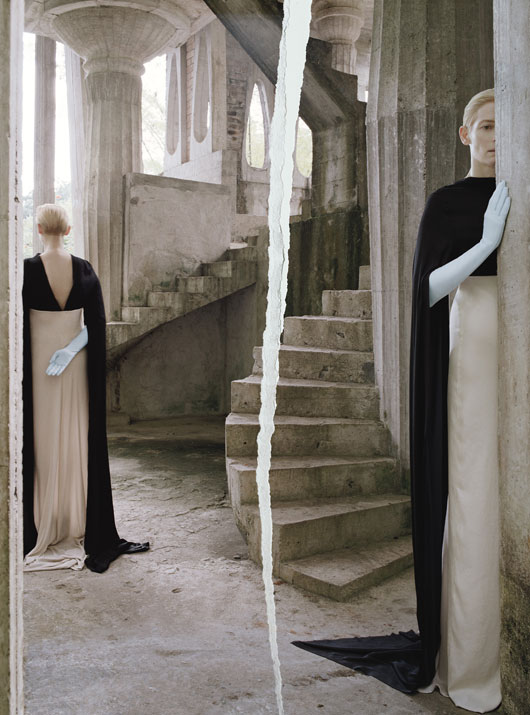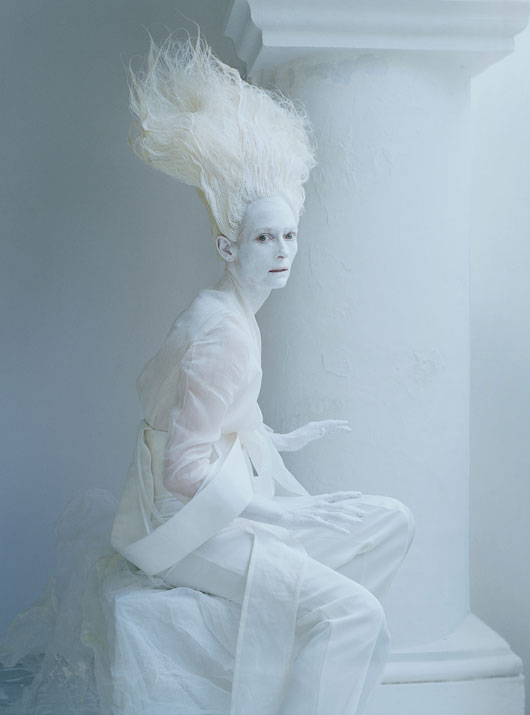‘The overwhelming sensuality of the natural world, whose life force is one of pure desire”
Marc Quinn
 Etymology of Desire, Marc Quinn, 2010. Quinn began his first series of orchids in 2008
Etymology of Desire, Marc Quinn, 2010. Quinn began his first series of orchids in 2008
Alexander McQueen by Sarah Burton, Spring/Summer 2015 collection
Etymology Of Desire and Prehistory Of Desire (2010) were the centerpiece of the Alexander McQueen women’s ready-to-wear Spring/Summer 2015 show in Paris Fashion Week. Cast from real flowers and parading, the orchids meditate on the human obsession of ideal beauty, achieved through the manipulation, modification and control of nature.
They were gargantuan, even dwarfing the typically attenuated McQueen models, hiked up on platform boots with a curving calligraphic heel. And they got the point across concisely – exotic, oriental, feminine. All pointers Sarah Burton wanted you to pick up in the clothes.
Maybe Burton was juxtaposing her fashion with art to assert the difference between the two. McQueen is one label that’s often lumped into that “art” category, and her last collection provoked criticism from some quarters for a degree of preciousness that pushed it beyond the realm of ready-to-wear.




 The Diary of a Dress: Alexander McQueen Shares the Saga of How One of His Inspirations – A Peter Arnold’s Orchid Photograph – Evolved from Simple Sketch to Production Nightmare to a Stunning Gown Fit for Supermodel Naomi Campbell. Writer: Lisa Armstrong, Harper’s Bazaar, 2004
The Diary of a Dress: Alexander McQueen Shares the Saga of How One of His Inspirations – A Peter Arnold’s Orchid Photograph – Evolved from Simple Sketch to Production Nightmare to a Stunning Gown Fit for Supermodel Naomi Campbell. Writer: Lisa Armstrong, Harper’s Bazaar, 2004
Kate Moss wearing an orchid printed Cheongsan by unidentified brand. Vogue USA, January 1997















